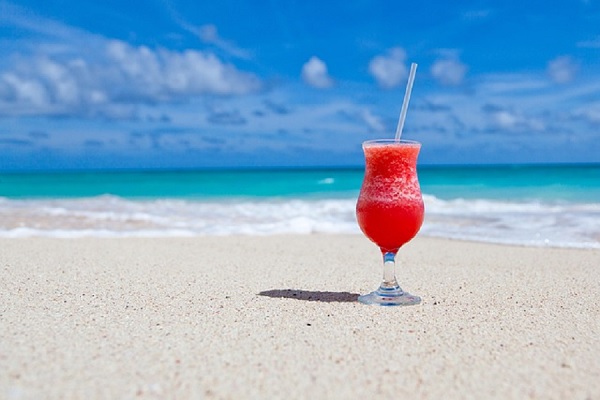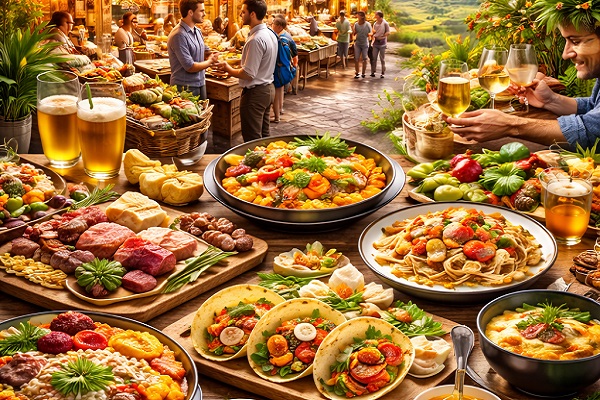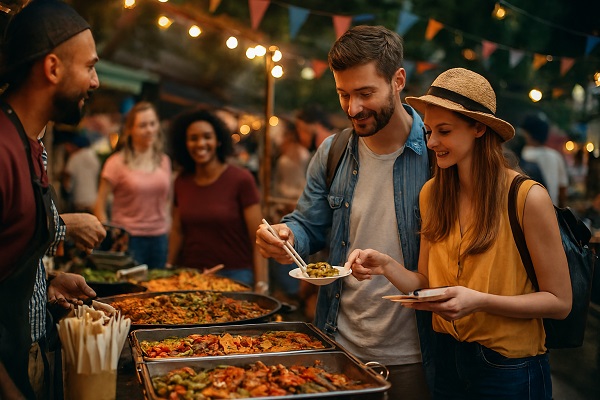Eat, Drink, Travel: Adventures for the Food-Loving Explorer

What Is Food and Beverage Tourism?
Food and beverage tourism involves traveling to different places specifically to discover and enjoy the culinary heritage of the region. This can include tasting authentic local dishes, visiting food markets, joining cooking classes, touring wineries and breweries, and even attending food festivals.
This form of tourism not only satisfies the appetite but also helps travelers understand a culture’s history, geography, and lifestyle through its cuisine. Every region’s food tells a story — about its people, climate, traditions, and evolution — making culinary tourism a deeply enriching experience.
Why Food and Beverage Tourism Is Gaining Popularity
Authentic Experiences: Tourists want to go beyond typical sightseeing and immerse themselves in local life. Food offers an authentic way to connect with a place.
Cultural Exploration: Food is a gateway to understanding cultures. Trying local ingredients and recipes helps travelers appreciate cultural diversity.
Social Media Appeal: Sharing mouth-watering food pictures and unique culinary experiences on platforms like Instagram has boosted interest in food tourism.
Health and Wellness: Many travelers are also interested in healthy, organic, or traditional diets, which food tourism can highlight.
Economic Impact: Food tourism supports local farmers, chefs, and businesses, making it an important sector for sustainable tourism growth.
Popular Food and Beverage Tourism Activities
Food Tours: Guided tours through local markets, street food stalls, or restaurants, highlighting signature dishes.
Cooking Classes: Hands-on experiences where travelers learn to cook traditional recipes from local chefs.
Wine and Brewery Tours: Visiting vineyards, wineries, or breweries to sample and learn about local wines and craft beers.
Food Festivals: Events celebrating regional specialties, seasonal ingredients, and culinary innovations.
Farm-to-Table Experiences: Visiting farms or orchards to see where ingredients come from and enjoy freshly prepared meals.
Top Destinations for Food and Beverage Tourism
Italy: Famous for pasta, pizza, gelato, and wines like Chianti and Prosecco.
Japan: Renowned for sushi, ramen, matcha, and sake.
Thailand: Known for its bold flavors with dishes like Pad Thai, Tom Yum, and street food delights.
France: The land of gourmet cheeses, pastries, wines, and haute cuisine.
Mexico: Celebrated for tacos, mole, tequila, and vibrant street food culture.
Benefits of Food and Beverage Tourism
Cultural Immersion: Deepens understanding of a destination’s heritage.
Support for Local Economies: Encourages sustainable tourism by promoting local producers and artisans.
Unique Memories: Food experiences create strong emotional connections and lasting memories.
Learning Opportunities: Travelers gain new culinary skills and knowledge.
Health Awareness: Exposure to diverse diets can inspire healthier eating habits.
Tips for Enjoying Food and Beverage Tourism
Research Local Specialties: Know the must-try dishes and drinks of your destination.
Be Adventurous: Don’t hesitate to try unfamiliar foods; they often surprise and delight.
Take Food Tours: Local guides can reveal hidden gems and stories behind dishes.
Respect Dietary Restrictions: If you have allergies or preferences, communicate clearly.
Document Your Experience: Take photos and notes to remember your culinary journey.























